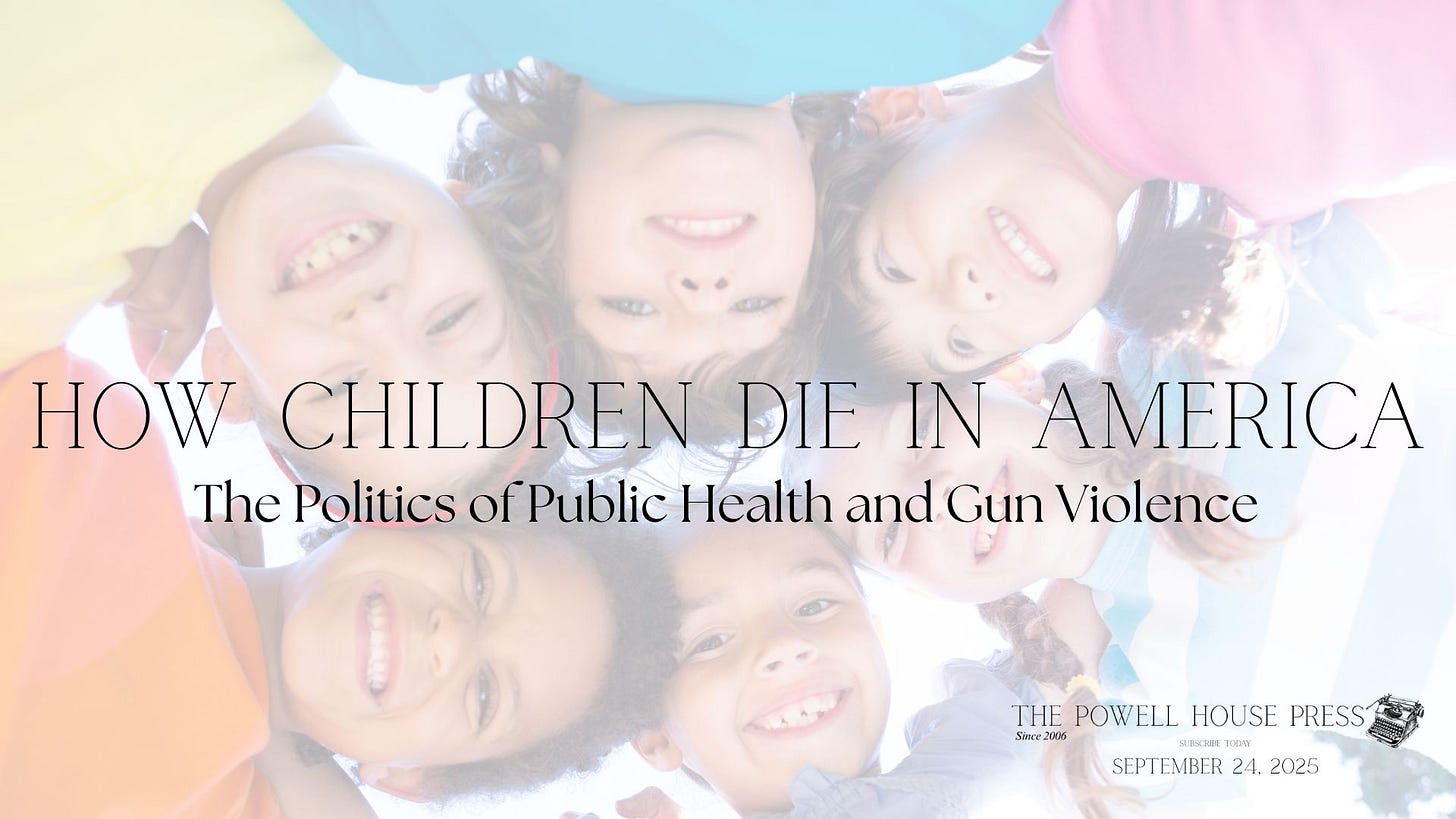Who's Killing Who. Part 2: The American School: A Chronicle of Lost Safety
How years of gun violence transformed childhood in America
Firearm-related injuries have become the leading cause of death among children and adolescents in the United States, surpassing motor vehicle accidents in recent years. This represents a preventable public health crisis that could be addressed through evidence-based interventions similar to those that successfully reduced childhood deaths from other causes like car accidents, poisoning, and infectious diseases.
Keep reading with a 7-day free trial
Subscribe to The Powell House Press to keep reading this post and get 7 days of free access to the full post archives.



